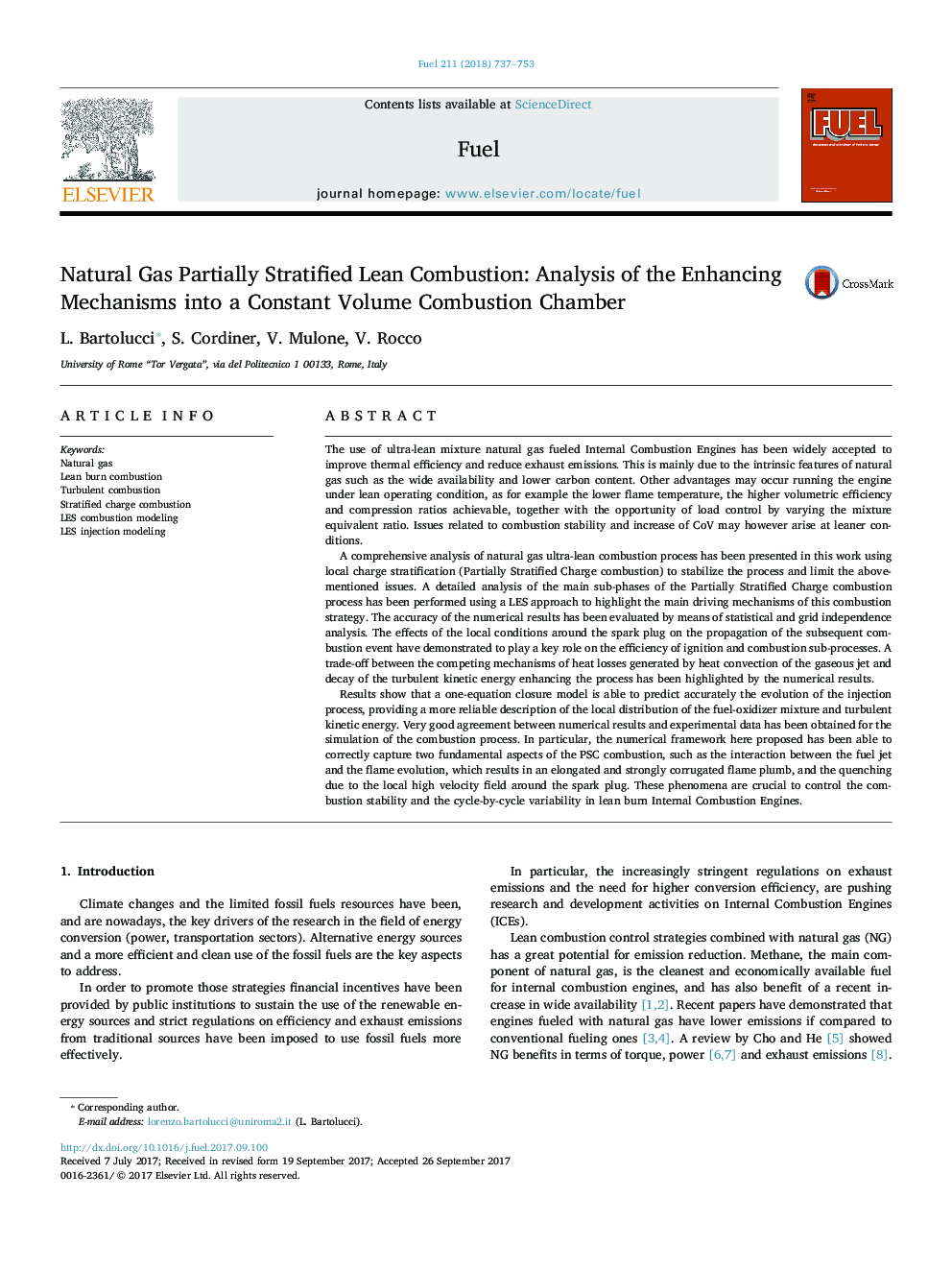| کد مقاله | کد نشریه | سال انتشار | مقاله انگلیسی | نسخه تمام متن |
|---|---|---|---|---|
| 6473602 | 1424953 | 2018 | 17 صفحه PDF | دانلود رایگان |
The use of ultra-lean mixture natural gas fueled Internal Combustion Engines has been widely accepted to improve thermal efficiency and reduce exhaust emissions. This is mainly due to the intrinsic features of natural gas such as the wide availability and lower carbon content. Other advantages may occur running the engine under lean operating condition, as for example the lower flame temperature, the higher volumetric efficiency and compression ratios achievable, together with the opportunity of load control by varying the mixture equivalent ratio. Issues related to combustion stability and increase of CoV may however arise at leaner conditions.A comprehensive analysis of natural gas ultra-lean combustion process has been presented in this work using local charge stratification (Partially Stratified Charge combustion) to stabilize the process and limit the above-mentioned issues. A detailed analysis of the main sub-phases of the Partially Stratified Charge combustion process has been performed using a LES approach to highlight the main driving mechanisms of this combustion strategy. The accuracy of the numerical results has been evaluated by means of statistical and grid independence analysis. The effects of the local conditions around the spark plug on the propagation of the subsequent combustion event have demonstrated to play a key role on the efficiency of ignition and combustion sub-processes. A trade-off between the competing mechanisms of heat losses generated by heat convection of the gaseous jet and decay of the turbulent kinetic energy enhancing the process has been highlighted by the numerical results.Results show that a one-equation closure model is able to predict accurately the evolution of the injection process, providing a more reliable description of the local distribution of the fuel-oxidizer mixture and turbulent kinetic energy. Very good agreement between numerical results and experimental data has been obtained for the simulation of the combustion process. In particular, the numerical framework here proposed has been able to correctly capture two fundamental aspects of the PSC combustion, such as the interaction between the fuel jet and the flame evolution, which results in an elongated and strongly corrugated flame plumb, and the quenching due to the local high velocity field around the spark plug. These phenomena are crucial to control the combustion stability and the cycle-by-cycle variability in lean burn Internal Combustion Engines.
Journal: Fuel - Volume 211, 1 January 2018, Pages 737-753
